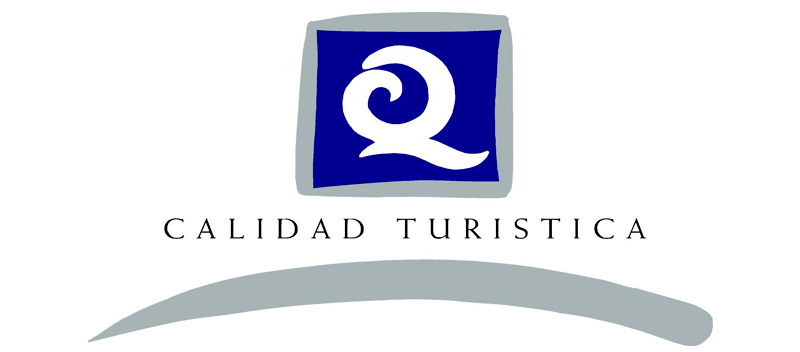DISCOVER
THE ENVIRONMENT THAT SURROUND US
ÚBEDA
Declared a World Heritage City by UNESCO. Called the "City of the Hills", its wealth today corresponds to its former splendor.
Visiting the city is moving in time and traveling to other times. His important past has left indelible marks in the city of his splendor of yesteryear. Jewel of the Andalusian Renaissance, during that time it reached its fullness and its streets and squares were filled with Palaces, Convents, Walls and Stately Homes.
Buildings declared National Monument and Cultural Interest Assets are distributed throughout the city, highlighting the degree of conservation of the doors of spiked wood and its iron knockers, lanterns and bars.
Vázquez de Molina Square constitutes the monumental heart of Úbeda and forms an unpublished urban planning and planning model in Spain until then.
The Sacred Chapel of the Savior, undoubtedly the most representative and beloved monument in the entire city. The fish market, in front of the Sacred Chapel, adopting the function of sacred theater.
The Royal Collegiate Church of Santa María la Mayor de los Reales Alcázares, Palace of the Chains (also known as the Vázquez de Molina Palace), Palace of Deán Ortega, Palace of the Marquis de Mancera, Residence of Pedro de Toledo, La Cárcel del Obispo, The Poster, The House of Juan de Medina, The Venetian Fountain of Francisco de los Cobos.
Visiting the city is moving in time and traveling to other times. His important past has left indelible marks in the city of his splendor of yesteryear. Jewel of the Andalusian Renaissance, during that time it reached its fullness and its streets and squares were filled with Palaces, Convents, Walls and Stately Homes.
Buildings declared National Monument and Cultural Interest Assets are distributed throughout the city, highlighting the degree of conservation of the doors of spiked wood and its iron knockers, lanterns and bars.
Vázquez de Molina Square constitutes the monumental heart of Úbeda and forms an unpublished urban planning and planning model in Spain until then.
The Sacred Chapel of the Savior, undoubtedly the most representative and beloved monument in the entire city. The fish market, in front of the Sacred Chapel, adopting the function of sacred theater.
The Royal Collegiate Church of Santa María la Mayor de los Reales Alcázares, Palace of the Chains (also known as the Vázquez de Molina Palace), Palace of Deán Ortega, Palace of the Marquis de Mancera, Residence of Pedro de Toledo, La Cárcel del Obispo, The Poster, The House of Juan de Medina, The Venetian Fountain of Francisco de los Cobos.
JAÉN
Under the Muslim castle, the pine forests and houses of the old part of the city are scattered on the slopes.
With its churches, San Juan, San Andrés, La Magdalena, La Merced, San Bartolomé and in the middle of the Cathedral. Under the Villardompardo Palace there are wonderful Arab Baths, upstairs houses two Museums, the Popular Arts and the Naif International.
Everywhere you can see the influence of Iberians, Romans or Arabs.
Everywhere you can see the influence of Iberians, Romans or Arabs.
CAZORLA
In this municipality, county seat and known for the charms of the mountains
, indoor tourism linked to nature and the Cazorla Natural Park has been developed. Discover it with a walk through its streets and squares, the Ruins of the Church of Santa María, the "egg" square, or enjoy like tapas in its bars and restaurants that offer a local cuisine and at a good price.
BAEZA
Declared a World Heritage City by UNESCO. One of the most important Renaissance enclaves in Spain.
In the Cathedral neighborhood we find some of the most valuable jewels in the city. It retains Gothic elements, such as the Moon Gate (13th century), and Mudejar, such as the pointed horseshoe arches of the chapels. Attached to the Cathedral are the High Town Hall and opposite, the source of Santa Maria.
The Jabalquinto palace with Elizabethan decoration on its facade, while in its cloister we can admire the transition from the Renaissance to the Baroque. It is worth visiting its Assembly Hall, where Romanesque capitals of the old church of San Juan are preserved.
An essential visit is the Antonio Machado Headquarters of the International University of Andalusia, housed in the former University.
Among numerous manor houses and mansions is the Pópulo square, a set consisting of the Casa del Pópulo (Civil Hearing and Public Notices), the Fountain of the Lions, the old Carnicería, the Puerta de Jaén and the Arco de Villalar. It is one of the most charming corners of Baeza where, next to noble buildings, several portions of the old walls and its door remain.
In the Cándido Elorza square, another large group of historical monuments, Elorza palaces, Cerón and Condes de Garcíes, and the houses of the Cabrera and Acuña meet, we must add the elegance of the forms of the church of San Pablo, located in its vicinity.
In the Cathedral neighborhood we find some of the most valuable jewels in the city. It retains Gothic elements, such as the Moon Gate (13th century), and Mudejar, such as the pointed horseshoe arches of the chapels. Attached to the Cathedral are the High Town Hall and opposite, the source of Santa Maria.
The Jabalquinto palace with Elizabethan decoration on its facade, while in its cloister we can admire the transition from the Renaissance to the Baroque. It is worth visiting its Assembly Hall, where Romanesque capitals of the old church of San Juan are preserved.
An essential visit is the Antonio Machado Headquarters of the International University of Andalusia, housed in the former University.
Among numerous manor houses and mansions is the Pópulo square, a set consisting of the Casa del Pópulo (Civil Hearing and Public Notices), the Fountain of the Lions, the old Carnicería, the Puerta de Jaén and the Arco de Villalar. It is one of the most charming corners of Baeza where, next to noble buildings, several portions of the old walls and its door remain.
In the Cándido Elorza square, another large group of historical monuments, Elorza palaces, Cerón and Condes de Garcíes, and the houses of the Cabrera and Acuña meet, we must add the elegance of the forms of the church of San Pablo, located in its vicinity.
LA IRUELA
It is believed that it was founded in 500 BC. Its castle stands out, visible from the pool and some hotel rooms.
Its most prominent element is the Tower of Homage, surrounded by walls that rest on the rock and that delimit a small enclosure. The second enclosure is formed by remains of several towers and walls, all supported by rocky outcrops.



